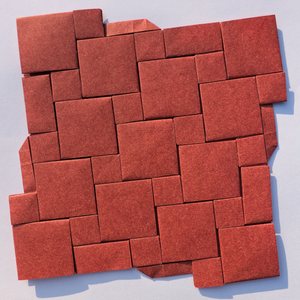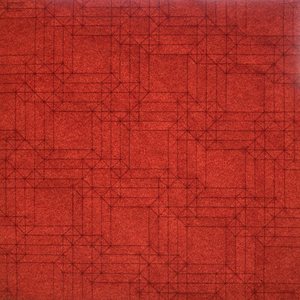Pythagorean Tiling



The pattern this origami tessellation represents is known as Pythagorean Tiling or Two Squares Tessellation. I came up with this design independently, but it has been known since at least 2003. As far as I can tell, the first to fold it was Alex Bateman (see his fold). Recently, Madonna Yoder / gatheringfolds published pictures of a number of related designs as well, Peter Strouvelle and Alessandra Lamio posted pictures of their versions on Facebook and Tom Crain mentioned him designing this pattern independently as well in a comment on my instagram post.
In this particular fold, the ratio of the sizes of the two squares is equal to 2:1 which results in an elegant pattern and also arises naturally due to the way I arrived at the pattern by using an 8x8 grid to fold a single molecule. However, all sorts of ratios can be folded, with a very large difference in size on one end of the spectrum, and a ratio of 1:1 which means just a flagstone of equal-sized squares on the other.
The structure of this model is that in each corner of a small square there is a modified twist which connects to a corner of the big square. The result is a flagstone pattern on the front side (the side with the two-square tessellation). In the case of 1:1 ratio, the tessellation is an iso-area flagstone. There is some similarity in this model’s structure to Momotani’s Wall.
Each molecule uses an 8×8 grid and in the folded model corresponds to one small square plus a one grid unit wide area around it. The molecule can be considered a kind of twist. In this model, all molecules have the same chirality (direction of rotation). It is also possible to connect the same molecules in a different way, with neighbors having opposite rotations. This results in a flagstone pattern of squares and rectangles.
This model (strictly speaking, its back side) is the starting point for some other variants as well as for the Woven Triangles tessellation series.
The precrease pattern you see in one of the pictures is optimized for the front side (the one with squares) to be clean, so each ractangular area visible on the back side still has a crease going through it. The paper used is red Elephant Hide paper, a classic among tessellation folders, unfortunately no longer produced in this beautiful color.
Comments